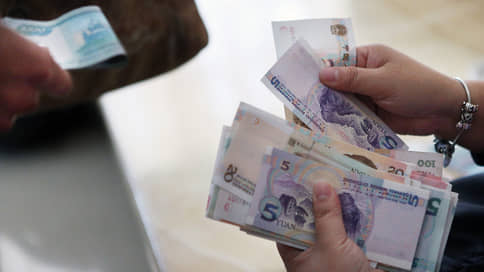Yuan turned into paper
[ad_1]

The placement of bonds denominated in yuan by the Metalloinvest holding, as well as the two previous issuers, passed with a decrease in yield. Demand for bonds in Chinese currency remains high, including against the backdrop of massive purchases of non-cash yuan on the stock exchange. In the near future, market participants expect further growth in activity in the sector of such bonds, primarily from large export-oriented companies.
On Friday, September 9, the Metalloinvest holding closed the books on the placement of two bond issues in yuan. Investors were offered issues with a circulation period of two years and five years with a volume of 1 billion CNY each. The organizers of the issues were Gazprombank, Dom.RF Bank, Zenit Bank, MKB, BC Region and Rosselkhozbank. Based on the results of the collection of applications, the yield on two-year bonds was set at 3.1% per annum, on five-year bonds – 3.7% per annum. Yields were reduced by 0.3–0.4 percentage points compared to the original benchmark.
Previously, two issues of five-year yuan bonds posted Rusal (for a total of CNY 4 billion) and one five-year issue posted Polyus (4.6 billion CNY). The yield then amounted to 3.9% and 3.8% per annum, respectively.
But if Rusal placed five-year bonds with a premium to Chinese government bonds at the level of 185 basis points, then Polyus and Metalloinvest placed about 140 basis points.
“The current market conditions are unique – due to the lack of the opportunity to invest in foreign currency, market investors have become less risk-sensitive in bonds denominated in yuan, which is why they buy securities even with lower premiums,” said Mikhail Avtukhov, Deputy Chairman of the Board of Sovcombank.
Private investors took an active part in all placements. The number of satisfied applications for Polyus bonds exceeded 8.9 thousand. Moreover, according to the BondsLab resource, almost 6.7 thousand applications were up to 10 thousand CNY (up to 87 thousand rubles). Rusal bonds were bought by wealthier investors – applications were satisfied from 180 thousand CNY (1.6 million rubles), a total of just over 650 pieces. To purchase such securities, individuals are actively buying Chinese currency. According to the Central Bank (.pdf), individuals in August bought Chinese currency on the Moscow Exchange for 39 billion rubles. (about 4 billion CNY). Secondary trading volume remains small. At the same time, Rusal’s bonds are currently traded at a price of about 101% of par, while Polyus’s bonds are close to par. “Investors who did not have time or could not buy at the initial placement are connected to purchases,” explains Dmitry Monastyrshin, chief analyst at PSB.
Market participants expect further growth in the activity of issuers in the segment of domestic bonds denominated in yuan.
Next week, Rosneft will be placing yuan bonds in the amount of at least 10 billion CNY. In addition, according to media reports, Gazprom Neft and Segezha are thinking about placing similar bonds. According to Pavel Vintin, director of investment banking services and capital markets operations at Rosbank, almost all companies with a high share of foreign exchange earnings and large foreign exchange debt – oil and gas, metallurgy, some transport and logistics – are looking for a replacement for the Eurobond market. “Full withdrawal into the ruble carries high risks for them, so at least part of their debt they will turn over into yuan,” he notes.
At the same time, market participants note that the current market liquidity is not enough for a mass exit of large issuers. “The funding base in this currency is just being formed, and there are actually no hedging instruments, which will hold back the growth of this market,” Pavel Vintin notes. As the market saturates, participation in new placements in yuan can take place not only at the expense of free cash, but also by reducing existing positions in securities of companies that have placed earlier. Therefore, as Anton Startsev, an analyst at Ingosstrakh-Investments Management Company, notes, new issuers in yuan will have to offer a premium to the secondary market.
One of the last on the market waiting for the release of banks. “Client inflows in recent months have exceeded outflows from active operations. The excess liquidity, which in September the banks placed on deposits with the Central Bank, amounted to 3.4 trillion rubles,” notes Dmitry Monastyrshin. According to Mr. Avtukhov, it makes sense for banks to raise financing 1-2% cheaper than the return on their assets.
[ad_2]
Source link





